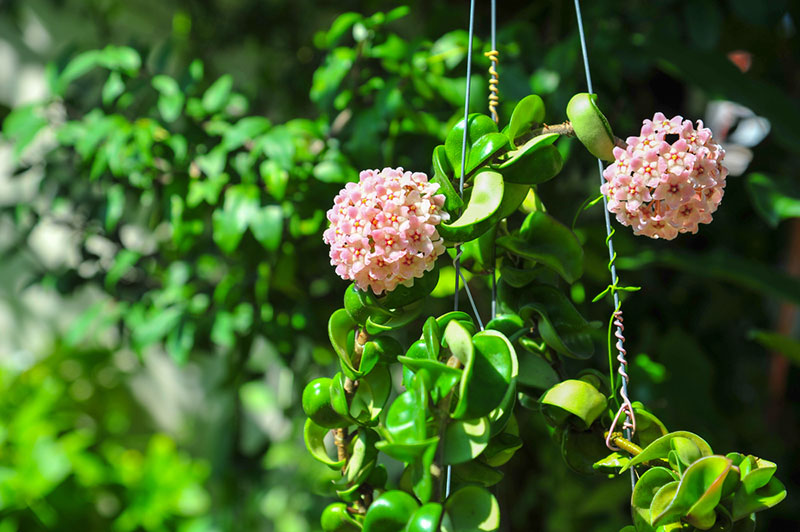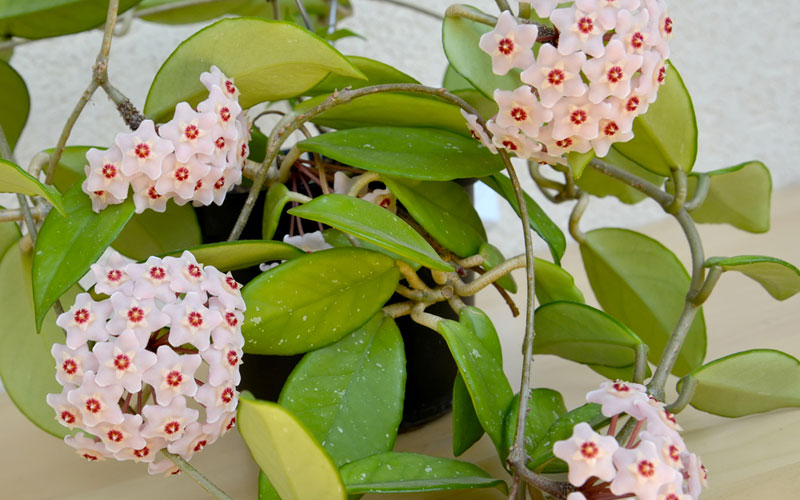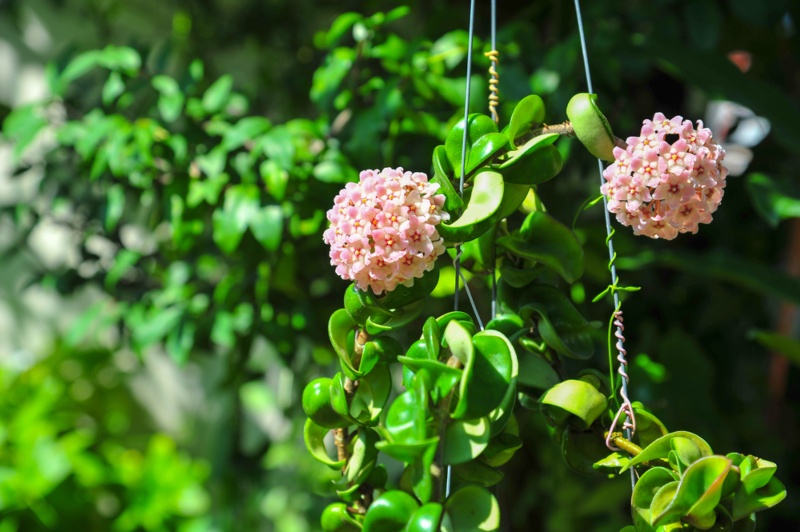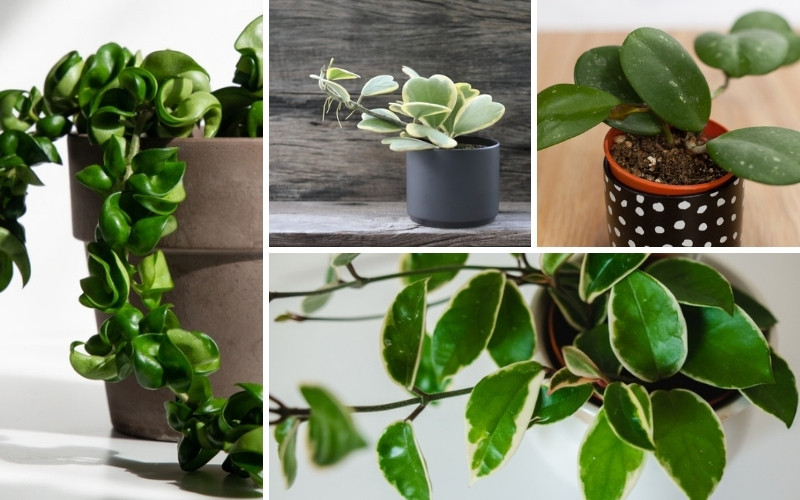
Hoyas (Hoya spp.), also known as wax plants, are low-maintenance vining plants that produce thick, waxy leaves and, in most cultivars, clusters of plump flowers. A few cultivars do not produce flowers, but the more common hoyas, such as Hoya carnosa, Hoya krohniana ‘Eskimo’, and Hoya multiflora, are all blooming varieties.
The flower clusters are dome-shaped, similar to the top of an umbrella; in fact, this type of flower cluster is called an umbel (no “r”).
Hoyas are long-lived perennials that come from the tropics, but they can grow in milder conditions easily.
Caring for hoyas is generally simple, but if you want the plant to bloom, give it the environment it craves – and avoid some common plant-care tasks that many other plants might demand.
Don’t Deadhead Them
When an umbel fades and the flowers wilt, don’t deadhead the hoya to make the plant look better. This is because of a quirk that you don’t see on many conventional garden plants: The hoya reblooms from exactly the same spur in the same spot. The next umbel will emerge from that same end of the stem, in other words. If you deadhead the flower, which typically involves snapping off part of the stem, you won’t get another bloom from that spot and will have to wait for other spurs grow over time. If you don’t like the look of the wilted flowers, you can lightly brush the petals away.
No other tactics will make the plant bloom if you’ve pinched away all its spurs. If you find that this was your mistake and the reason you aren’t getting hoya flowers, care for the plant as usual and wait for it to grow more spurs as time goes by.
Hoyas Need Appropriate Light
The light that your hoya gets is one of the top contributors to the plant’s ability to bloom. While too much bright light can scorch the plant (as bright light can do to most other plants), light that’s too low will prevent blooming. If your hoya refuses to bloom, the light level should be one of the first things you look at.
Hoyas don’t necessarily need full sun all the time; they can live healthy and happy lives in full-sun, partial-sun, and dappled-shade conditions. However, they do need exposure to bright light to produce enough food through photosynthesis to support blooming. If you can give them at least full morning sun for several hours, that will help; afternoon sun with some dappled shade is good, too.
Keep the Plant Rootbound
Hoyas are epiphytes, similar to orchids. They like having their roots in somewhat compressed circumstances because those mimic what the plant experiences in the wild, so let the plant be a bit rootbound. Occasionally, over the years, you may find that it does need repotting, but much of the time changing out the soil and planting medium while using the same container is enough. Being rootbound can be stressful, but that stress could be enough in the hoya’s case to get it to bloom more.
Water and Soil Drainage
Hoyas need soil that drains well, and you don’t want to give the plant too much water. A combination of materials like peat and orchid bark chips can work very well; perlite, other bark types, and additional chunky planting mixes can work in combination, too. Never let a hoya sit in water; when you water deeply, you want to see the excess water drain out and away from the roots. Otherwise, the plant will drown.
Watering too much, even with great drainage, can be stressful for the plant in a bad way. Be sure you wait until the top 1 to 2 inches of soil are dry, and in winter, let the plant get a little drier as sometimes this can help with future blooming. However, don’t let the plant’s leaves shrivel up – if you see that, the plant needs water. Do keep the plant well-misted, and place it in a more humid part of your home if possible.
Age Could Be a Factor
Immature hoyas won’t bloom, but the plant’s growth to maturity varies. You can find varieties that bloom when they reach a couple of years old and others that won’t bloom until they reach a good seven years old. If all other conditions are optimal and you’ve never seen an umbel on the plant since getting it, it could be you just have a younger hoya that needs time to mature.







